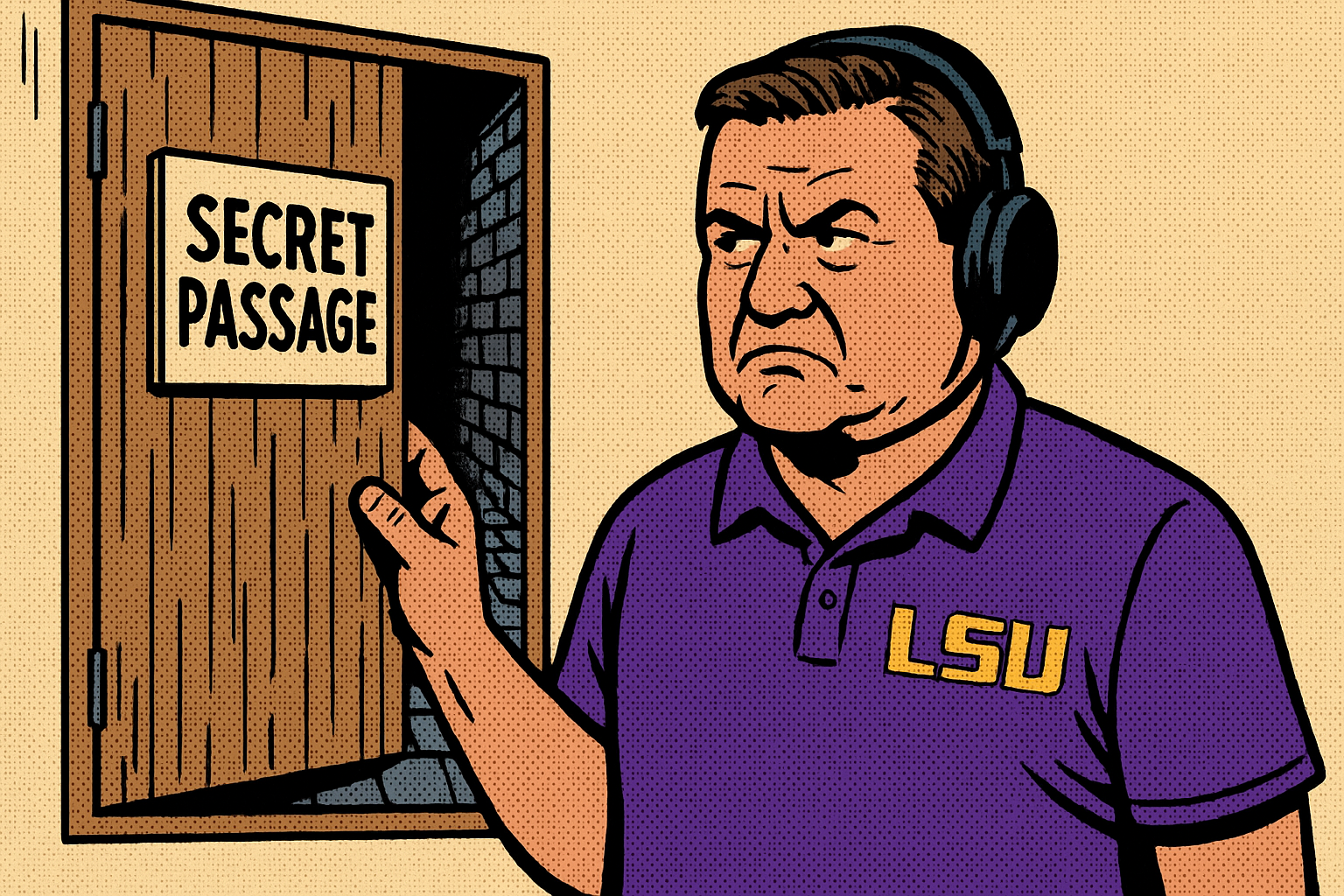Baton Rouge, LA – In what experts are calling a groundbreaking innovation in college athletics, LSU’s head football coach, Dennis “Smokescreen” McAllister, has allegedly funneled departmental funds into a labyrinthine network of secret passageways beneath the university’s athletic center following his latest abrupt departure from a press conference. This comes after McAllister successfully evaded uncomfortable questions about the team’s recent home game loss by vanishing mid-sentence, leaving only an echo and bewildered journalists in his wake.
According to insiders, this clandestine project has been in the planning stages since McAllister’s installment two years ago, when he deftly sidestepped his first difficult interview topic by hopping out of a restroom window. Since then, he is said to have become increasingly adept at disappearing into thin air, sparking rumors of a passage infrastructure that mirrors an Agatha Christie novel more than a college football program.
Insiders suggest that the underbelly of LSU’s athletic complex now boasts an elaborate series of tunnels complete with hidden doors, trapdoors, and even a reported moat. “It’s quite ingenious, actually,” said Dr. Emory Feldstein, a self-proclaimed expert in athletic subterfuge and visiting professor at the Institute of Sporadic Evasion (ISE). “What we’re seeing here is a merging of strategic retreat and urban spelunking. It’s what we in the industry call a ‘technical dodge.’”
The recent press conference incident revealed what many suspect is just the tip of a much larger, elaborate iceberg. It has prompted rival coaches to request similar infrastructure investments to bolster their own press conference defenses. University spokespersons have denied knowledge of any such underground constructs, but frequently contradict themselves by posing the question, “How did you find that out?” whenever details are leaked to the media.
Not all have embraced Coach McAllister’s innovative approach with open arms. Some faculty members express concern over the safety and legality of these concealed catacombs, especially after the university’s esteemed janitorial staff reported repeated sightings of “ominous shadows” and “the distant clatter of cleats” echoing from within supposedly off-limits areas.
Perhaps the most baffling response to these developments originates from the student body itself. Earlier this week, an impromptu protest sprung up demanding equal access to the underground escape routes. “If Coach McAllister can use them to dodge accountability, why can’t we use them to dodge midterms?” said Jenna Travers, a junior majoring in Applied Napping. Students have begun posting maps of suspected entry points on social media, sparking a sophomoric subculture of exploration that has quickly replaced Pokémon Go as the campus’s favored pastime.
As the university continues its dutiful investigation into the matter, prepared to take decisive action pending the availability of a reliable GPS signal in the underground labyrinth, seasoned analysts suggest that McAllister’s actions could set a dangerous precedent in collegiate sports. Indeed, as budget reports inexplicably list “masonry supplies” alongside “Gatorade,” the athletic department may soon find itself digging out of a different sort of hole altogether.
In a statement released late Tuesday night, McAllister seemed unfazed by the controversy, offering only, “Proof of my whereabouts is not indicative of my location,” before promptly vanishing into a nearby wall panel, leaving the assembled reporters with nothing but speculation and the faint sound of a well-oiled trapdoor closing shut.

Leave a Reply